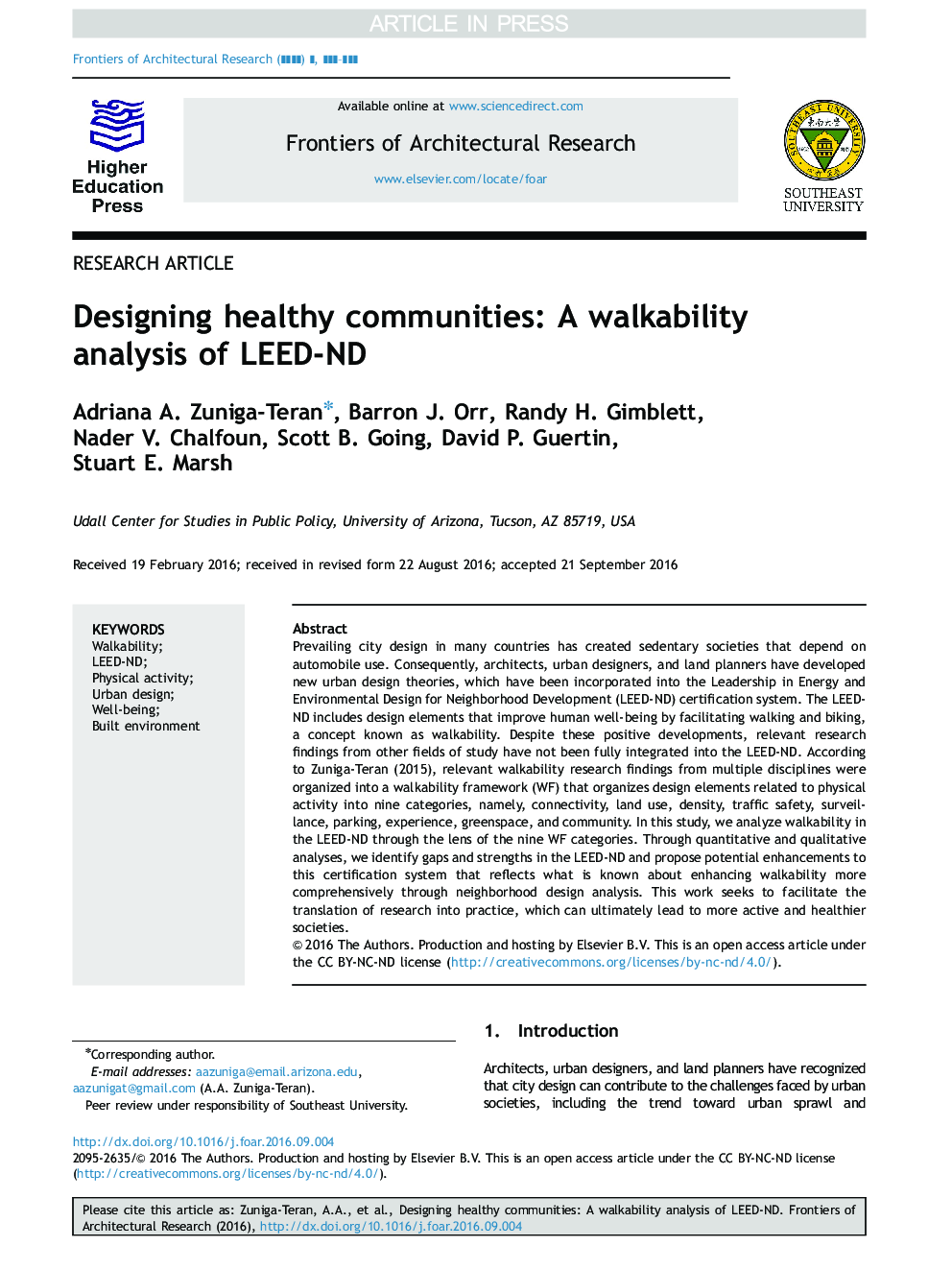| Article ID | Journal | Published Year | Pages | File Type |
|---|---|---|---|---|
| 6742603 | Frontiers of Architectural Research | 2016 | 20 Pages |
Abstract
Prevailing city design in many countries has created sedentary societies that depend on automobile use. Consequently, architects, urban designers, and land planners have developed new urban design theories, which have been incorporated into the Leadership in Energy and Environmental Design for Neighborhood Development (LEED-ND) certification system. The LEED-ND includes design elements that improve human well-being by facilitating walking and biking, a concept known as walkability. Despite these positive developments, relevant research findings from other fields of study have not been fully integrated into the LEED-ND. According to Zuniga-Teran (2015), relevant walkability research findings from multiple disciplines were organized into a walkability framework (WF) that organizes design elements related to physical activity into nine categories, namely, connectivity, land use, density, traffic safety, surveillance, parking, experience, greenspace, and community. In this study, we analyze walkability in the LEED-ND through the lens of the nine WF categories. Through quantitative and qualitative analyses, we identify gaps and strengths in the LEED-ND and propose potential enhancements to this certification system that reflects what is known about enhancing walkability more comprehensively through neighborhood design analysis. This work seeks to facilitate the translation of research into practice, which can ultimately lead to more active and healthier societies.
Related Topics
Physical Sciences and Engineering
Energy
Renewable Energy, Sustainability and the Environment
Authors
Adriana A. Zuniga-Teran, Barron J. Orr, Randy H. Gimblett, Nader V. Chalfoun, Scott B. Going, David P. Guertin, Stuart E. Marsh,
